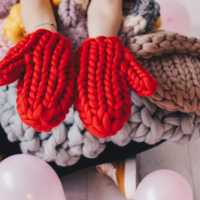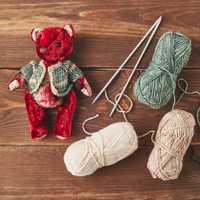How to Read a Counted Cross Stitch Chart
By Jean Leeming
How to Read a Counted Cross Stitch Chart
By Jean Leeming
Some people have stated that they are reluctant to take up counted cross stitch because it looks complicated. That is not true and hopefully this will explain how a chart works.
All you are doing is transferring a design from paper on to fabric with different coloured threads using cross stitch and counting the squares as you stitch.
A cross stitch kit will include a chart and an explanation. If you purchase a chart it will have all the information on as kit includes. The difference obviously is there are no fabric or threads.
Purchased stand alone charts will advise you of the fabric count used and may give you optional counts which can alter the size of the stitched design. Normally a chart will give the completed size of the design not the amount of fabric required.
If a design is 4 x 4 inches you will need to purchase fabric measuring 8 x 8 inches as there needs to be 2 inches on all sides to allow for framing or mounting the finished piece.
The chart will be in the form of a grid with bold lines every 10 squares.
Every square represents a hole in the fabric.
A square with no symbol means no stitch is required.
In the squares there will be symbols each symbol represents a colour.
Near to the chart there will be a colour key for example a question mark is a symbol ? this represents green. So all squares with a ? in will be stitched in green.
The colour key will have the symbol and or the colour or the thread number sometimes it has both. On a stand alone chart it should have the thread number otherwise you would not know what shades to purchase.
Quite a few kit charts give the symbol and just the colour without the number as the threads are included.
To find the centre of the chart which on the fabric is where you will begin, there may be arrows at the top and sides of the chart. Follow these arrows across and down until they meet in the centre it may help to mark the centre of the chart with a pencil.
Whether using a kit or just a chart whatever you do read the instructions carefully. Cross stitch is normally stitched with two strands of thread. Some designs are worked with just one strand. There is nothing worse than realizing after a quarter way through the design you are working with the wrong thread count.
Jean Leeming is a keen cross stitch enthusiast. She writes articles on all aspects of Cross Stitch and also runs a website: Needlework Magic where she sells a wide range of Cross Stitch Kits which are very competitively priced.
Article Source: http://EzineArticles.com/?expert=Jean_Leeming
Some people have stated that they are reluctant to take up counted cross stitch because it looks complicated. That is not true and hopefully this will explain how a chart works.
All you are doing is transferring a design from paper on to fabric with different coloured threads using cross stitch and counting the squares as you stitch.
A cross stitch kit will include a chart and an explanation. If you purchase a chart it will have all the information on as kit includes. The difference obviously is there are no fabric or threads.
Purchased stand alone charts will advise you of the fabric count used and may give you optional counts which can alter the size of the stitched design. Normally a chart will give the completed size of the design not the amount of fabric required.
If a design is 4 x 4 inches you will need to purchase fabric measuring 8 x 8 inches as there needs to be 2 inches on all sides to allow for framing or mounting the finished piece.
The chart will be in the form of a grid with bold lines every 10 squares.
Every square represents a hole in the fabric.
A square with no symbol means no stitch is required.
In the squares there will be symbols each symbol represents a colour.
Near to the chart there will be a colour key for example a question mark is a symbol ? this represents green. So all squares with a ? in will be stitched in green.
The colour key will have the symbol and or the colour or the thread number sometimes it has both. On a stand alone chart it should have the thread number otherwise you would not know what shades to purchase.
Quite a few kit charts give the symbol and just the colour without the number as the threads are included.
To find the centre of the chart which on the fabric is where you will begin, there may be arrows at the top and sides of the chart. Follow these arrows across and down until they meet in the centre it may help to mark the centre of the chart with a pencil.
Whether using a kit or just a chart whatever you do read the instructions carefully. Cross stitch is normally stitched with two strands of thread. Some designs are worked with just one strand. There is nothing worse than realizing after a quarter way through the design you are working with the wrong thread count.
Jean Leeming is a keen cross stitch enthusiast. She writes articles on all aspects of Cross Stitch and also runs a website: Needlework Magic where she sells a wide range of Cross Stitch Kits which are very competitively priced.
Article Source: http://EzineArticles.com/?expert=Jean_Leeming



